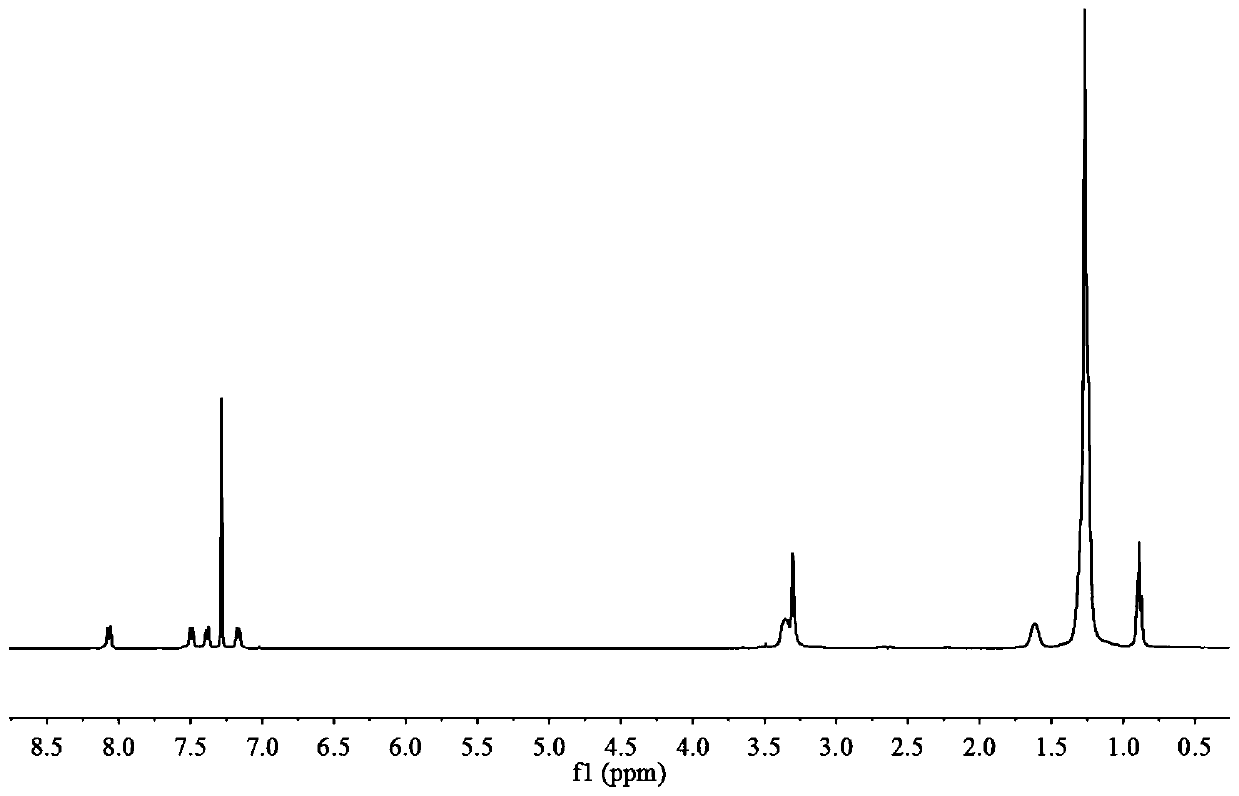Divalent copper ion fluorescent probe based on tetraphenylethylene ion complex and its preparation method and use
A technology of ion complexes and divalent copper ions, applied in the field of fluorescent probes, to achieve the effects of easy purification, simple operation and high yield
- Summary
- Abstract
- Description
- Claims
- Application Information
AI Technical Summary
Problems solved by technology
Method used
Image
Examples
Embodiment 1
[0047] The preparation of compound (III), (document: Zhangwen Wei, Zhi-Yuan Gu, Ravi K.Arvapally, etal. J.Am.Chem.Soc.2014,136,8269-8276.) comprises the following steps:
[0048] (1)N 2 Under protection, 250ml of dry tetrahydrofuran (THF) was added to a 500ml two-neck flask, stirred at room temperature for 5min, 4.59g (0.07mol) of zinc powder was added, and 4.21ml (0.035mol) of titanium tetrachloride (TiCl 4 ), reflux at 75°C for 2h, cool to room temperature, add 20g of 4,4'-dibromobenzophenone, in N 2 During protection, react at 75°C for 24h to obtain a mixture. Mix the mixture, 20g of potassium carbonate, 20ml of deionized water and 120ml of dichloromethane thoroughly, then vacuum filter with diatomaceous earth, spin the obtained filtrate to remove the solvent, and wash the residue with dichloromethane and Methanol was recrystallized to remove unreacted monomers and purified to obtain tetra-(4-bromophenyl)ethylene (I).
[0049] (2) N Under protection, add tetrakis-(4-brom...
Embodiment 2
[0052] A preparation method of a divalent copper ion fluorescent probe based on tetraphenylethylene ion complex, comprising the steps of:
[0053] (1) 38 mg of compound (III) was dropped into 10 ml of potassium hydroxide (KOH) aqueous solution with a molar concentration of 0.023 mol / L, and stirred for 2 hours at 50° C. in a water bath to obtain a compound (IV) solution, which was cooled to room temperature; the compound The molar concentration of (III) is 0.0046mol / L, and the molar ratio of described potassium hydroxide and compound (III) is 5:1;
[0054] (2) 0.11g of the compound dioctadecyldimethylammonium bromide (DOAB) was dissolved in 16mL of 75% aqueous ethanol at 50°C to obtain a DOAB solution with a molar concentration of 0.011mol / L;
[0055] (3) Under the condition of stirring at 50°C, drop the compound (IV) solution into the solution obtained in step (2), stir, and a precipitate is formed, wash the precipitate with an aqueous ethanol solution with a volume concentrat...
Embodiment 3
[0060] A preparation method of a divalent copper ion fluorescent probe based on tetraphenylethylene ion complex, comprising the steps of:
[0061] (1) 55 mg of compound (III) was dropped into 15 ml of a molar concentration of 0.018 mol / L potassium hydroxide solution, and stirred for 3 hours at 45° C. in a water bath to obtain a solution of compound (IV), which was cooled to room temperature; the compound (III) The molar concentration is 0.006mol / L, and the mol ratio of described potassium hydroxide and compound (III) is 4:1;
[0062] (2) 0.156g compound dihexadecyldimethylammonium bromide (DHAB) was dissolved in 16mL of 40% ethanol aqueous solution at 45°C to obtain a DHAB solution with a molar concentration of 0.017mol / L;
[0063] (3) Under the condition of stirring at 45°C, drop the compound (IV) solution into the solution obtained in step (2), stir, and a precipitate is formed, wash the precipitate with an aqueous ethanol solution with a volume concentration of 40%, and dry...
PUM
 Login to View More
Login to View More Abstract
Description
Claims
Application Information
 Login to View More
Login to View More - R&D
- Intellectual Property
- Life Sciences
- Materials
- Tech Scout
- Unparalleled Data Quality
- Higher Quality Content
- 60% Fewer Hallucinations
Browse by: Latest US Patents, China's latest patents, Technical Efficacy Thesaurus, Application Domain, Technology Topic, Popular Technical Reports.
© 2025 PatSnap. All rights reserved.Legal|Privacy policy|Modern Slavery Act Transparency Statement|Sitemap|About US| Contact US: help@patsnap.com



